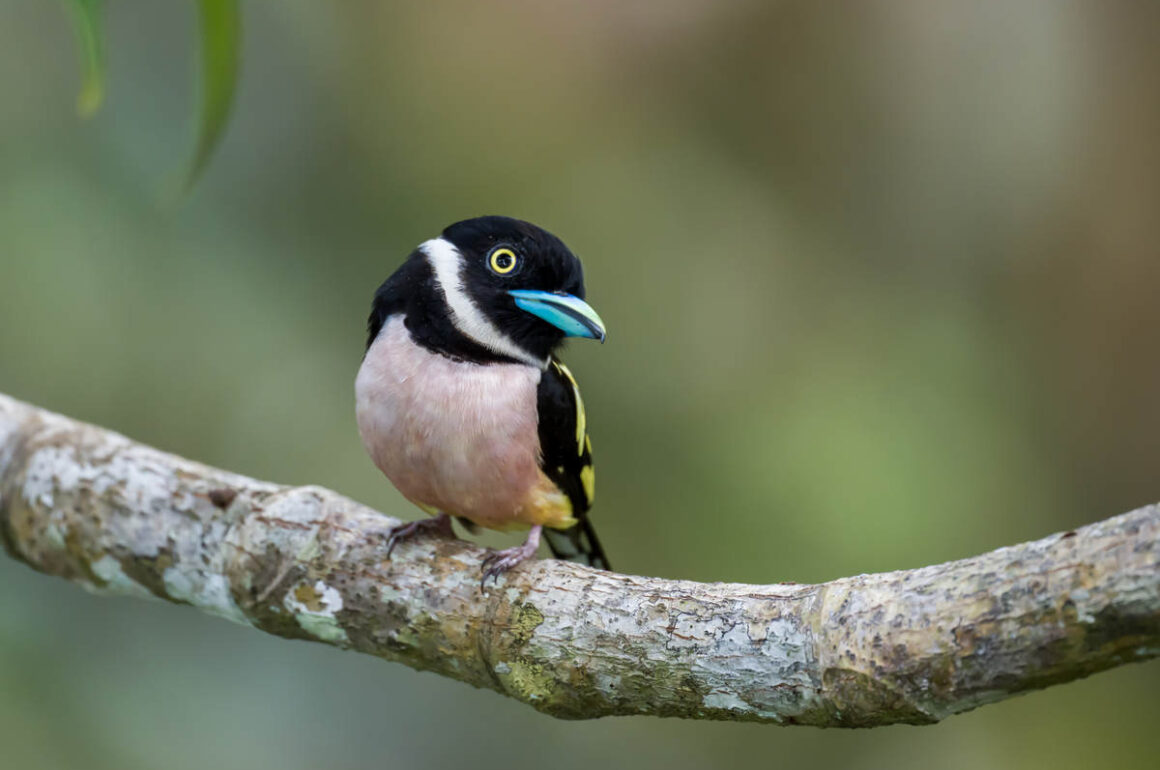
It feels good to start a post with some truly attractive birds – such as two species of broadbills.

If you like cute birds, you will probably like the Black-and-yellow Broadbill.
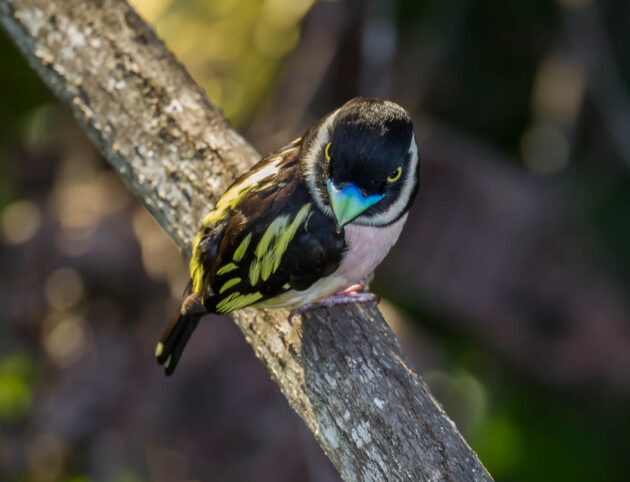
The male has a continuous black breastband …
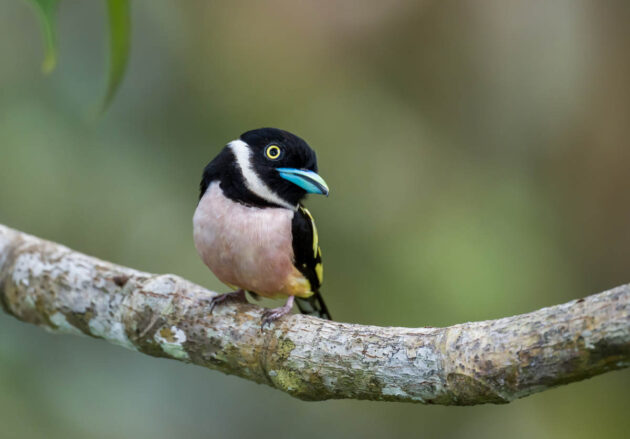
… while that of the female is broken in the center. Homework assignment: Is the bird in this video a male or a female?
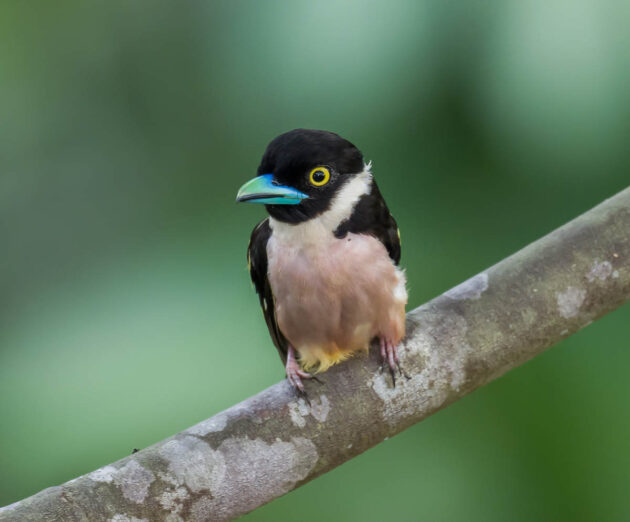
Strangely, there do not seem to be many papers on this species. If I was an ornithologist, I think I would focus on them, if only because they are such attractive birds. (Kai, are you getting a bit sentimental?)
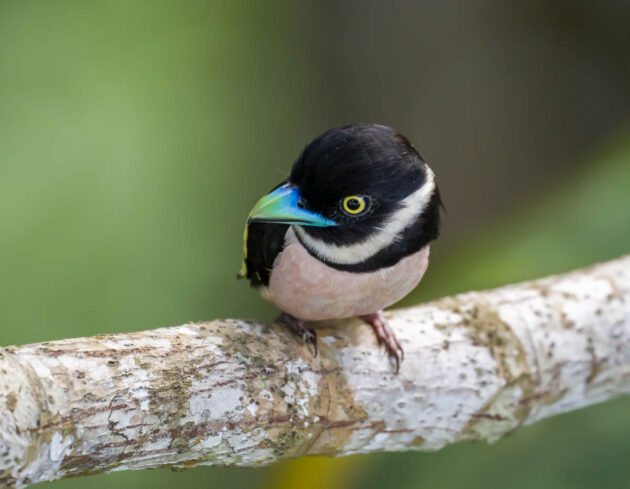
Though the Black-and-yellow Broadbill is classified as Near Threatened, it is relatively easy to see at Sepilok, particularly from the canopy walkway.
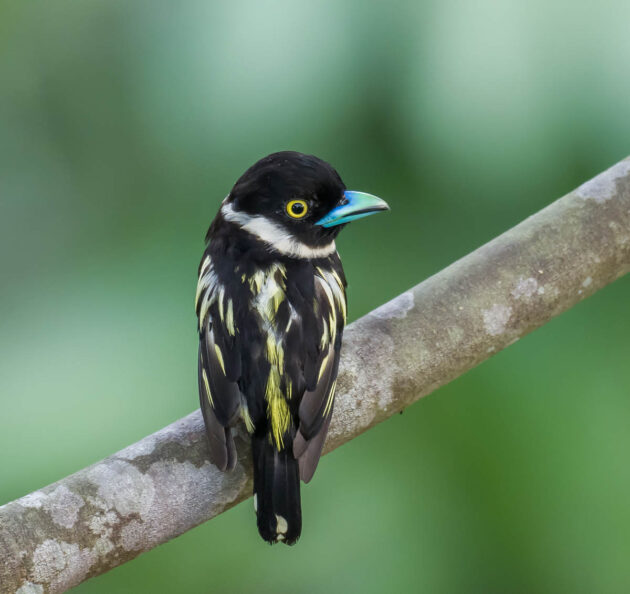
While the number of Black-and-red Broadbills has also declined, it is still listed as Least Concern.
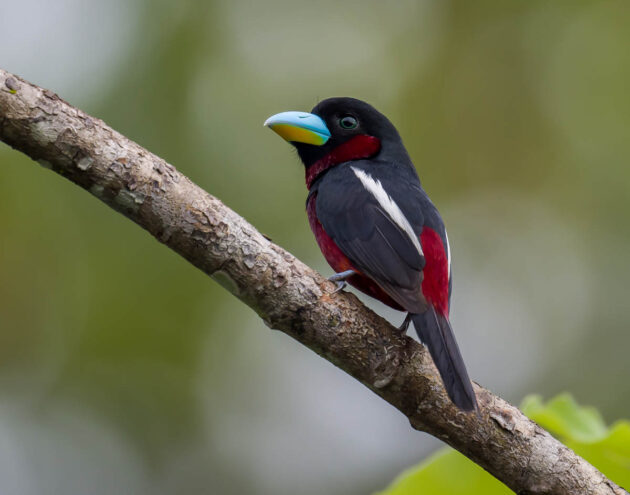
The decline is probably partly due to deforestation – a study found that Black-and-red Broadbills nests were more often located in areas with a high proportion of forest habitat compared to disturbed habitat.
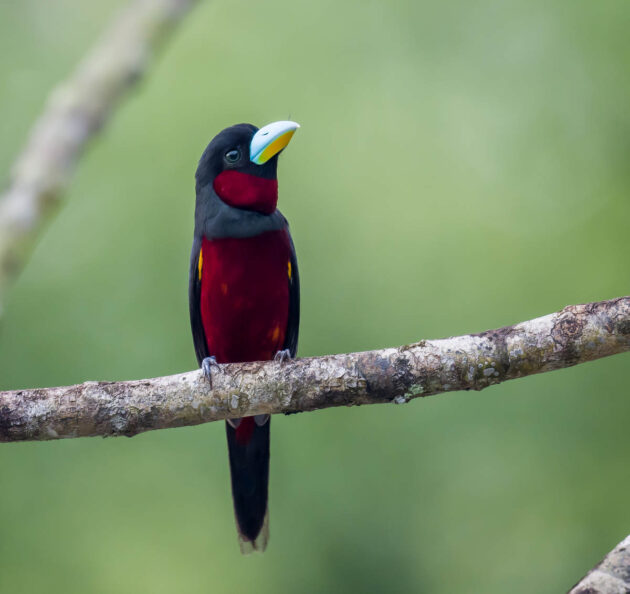
Though in terms of aesthetics, their nests are not much to look at – a paper (in Thai, but with an English summary) describes the nest as “a bulky, untidy ball hanging from the tip of a branch of stick with an average height of 1.39 m above the water surface”.
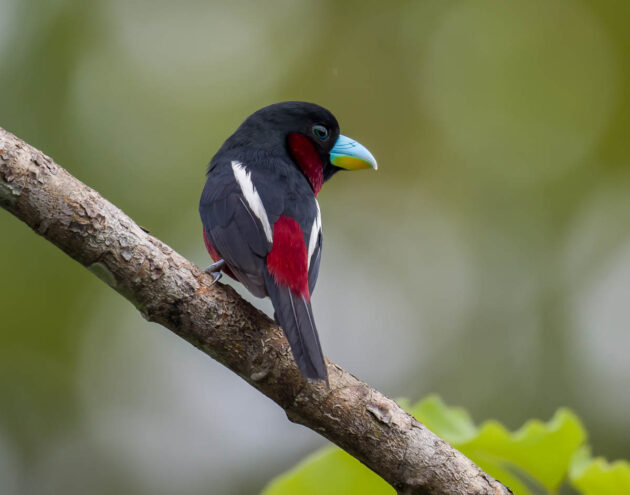
Some weirdoes among the biologists also seem to be interested in the Black-and-red Broadbill – not for the birds themselves but for their parasites, in particular, lice and mites. In one paper, you can find fascinating sentences such as “The new species is most similar to D. comoroensis in having the elongate notogastral porose areas Aa, however, it differs from the latter by the presence of four pairs of notogastral porose areas and the absence of anterior notogastral margin and ridges on anal plates.” I am sure if I understood all the words in this sentence, I would probably want to throw up.
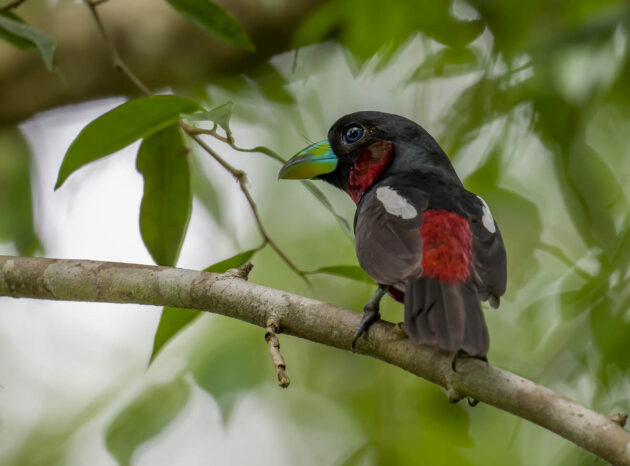
Apparently, some of the lice and mites have also switched from their previous bulbul hosts to the poor Black-and-red Broadbills, as described here. Maybe they like the red color of the broadbill better than that of the often fairly dull-colored bulbuls.
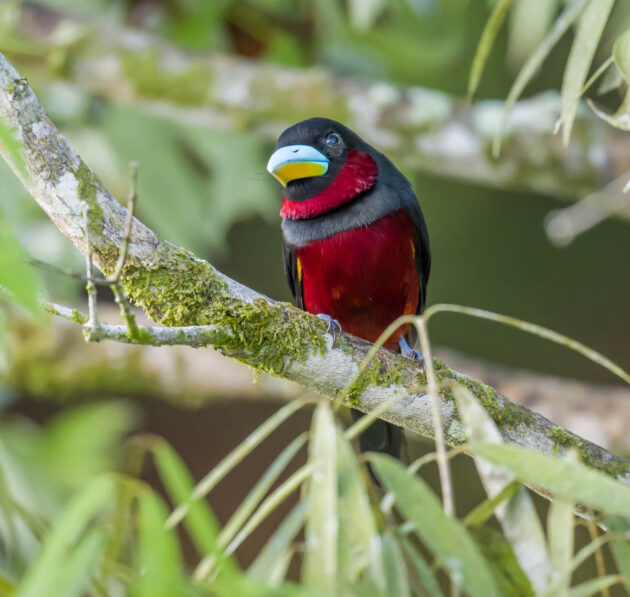
Another paper looks at the nest-building techniques of two broadbills including the Black-and-red Broadbill and predictably ends with the somewhat pompous claim that the “study of nests in the described species provides a key to understanding the construction of nests in other species of broadbills and in bird species building similar domed pendent nests.” They forgot to mention that it will probably also promote world peace.

I agree with eBird that the Asian Glossy Starling is “fierce-looking”.
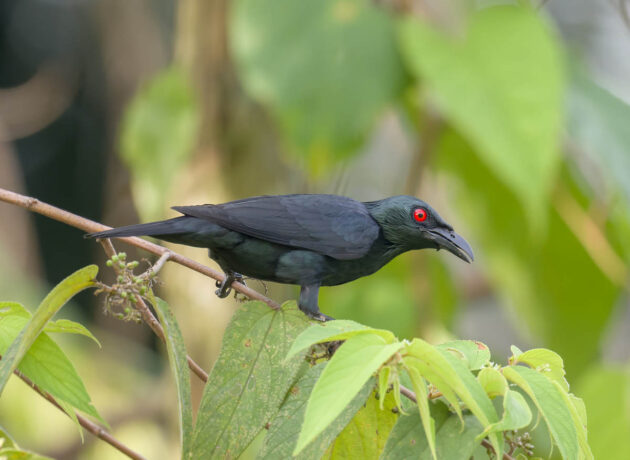
Appropriately, it is an invasive species in places such as Taiwan, where some papers recommend reducing the population.
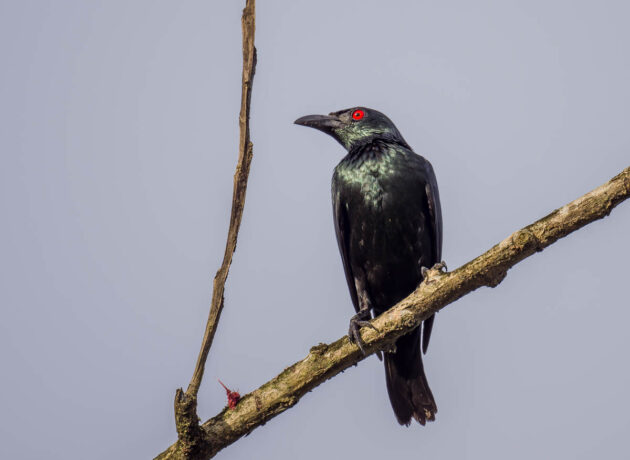
The invasive nature of the species in Taiwan is hinted at by its scientific name of panayensis, or “of the Philippines”.
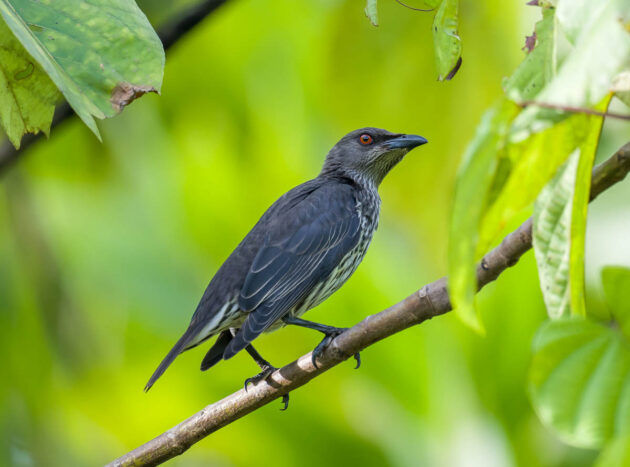
If you prefer blood parasites to birds, maybe this paper (“Prevalence of haemosporidia in Asian Glossy Starling with discovery of misbinding of Haemoproteus-specific primer to Plasmodium genera in Sarawak, Malaysian Borneo”) is more interesting for you.
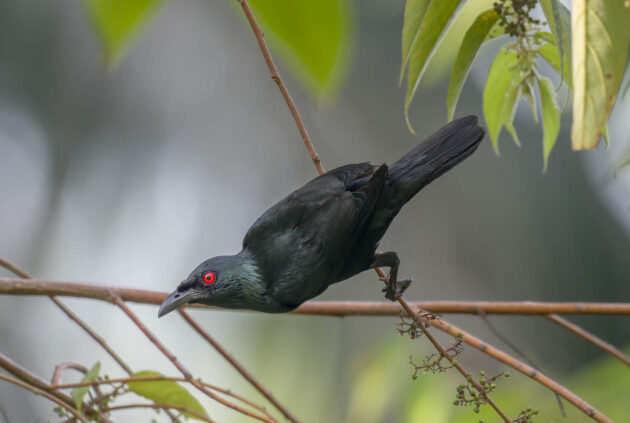
They mostly eat fruit (76%) – one Malaysian student got his bachelor’s degree by studying their fecal matter.
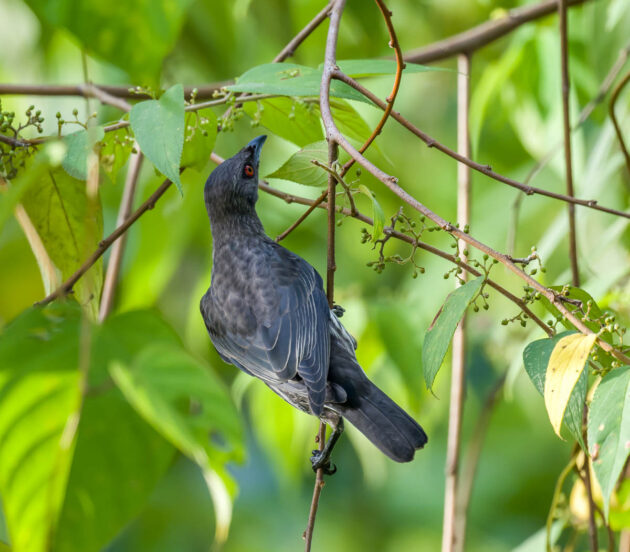
In the non-breeding season, male Baya Weavers sometimes enter the basket-making trade, often with considerable success. You can see why here.
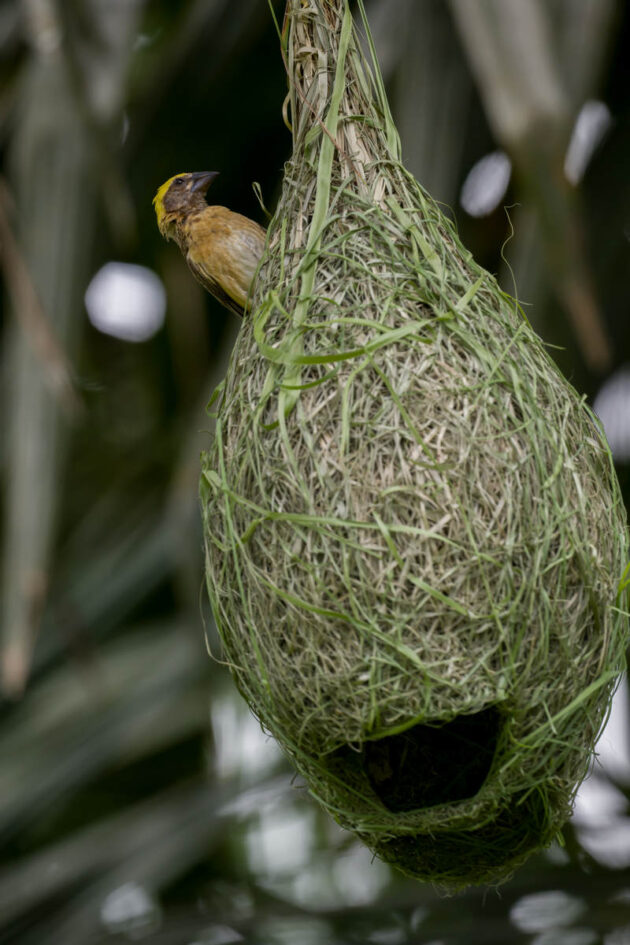
For some reason, the distribution map of the Baya Weaver in the HBW does not include Sabah. Maybe the birds I saw were not real.
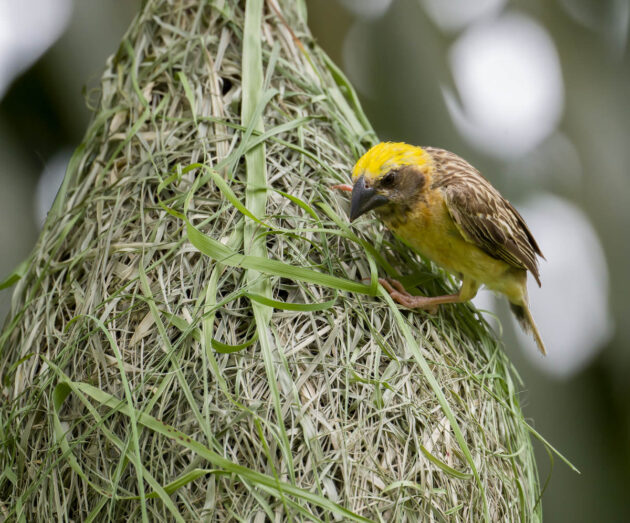
Given the effort and skill it must take to construct these nests, the finding that female choice of a mate is more correlated to nest location than to nest building quality is surprising. Even to the author of the paper, who cautiously adds that “nest architecture is unlikely to be irrelevant to females, and its role deserves further investigation” (if swear words were allowed on 10,000 Birds, I would say that he is trying to cover his ass).
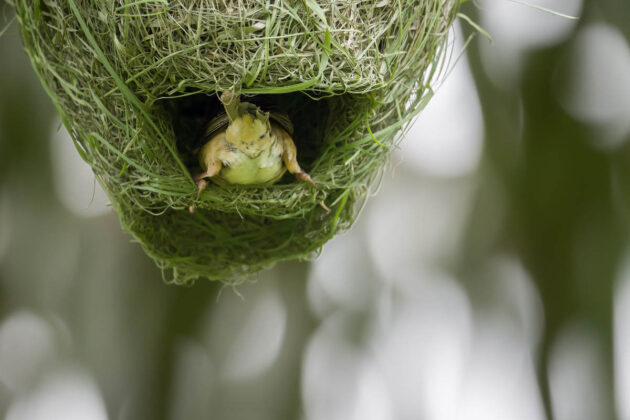
Meanwhile, the females seem to have a much more relaxing life, at least in this early stage of the breeding season.
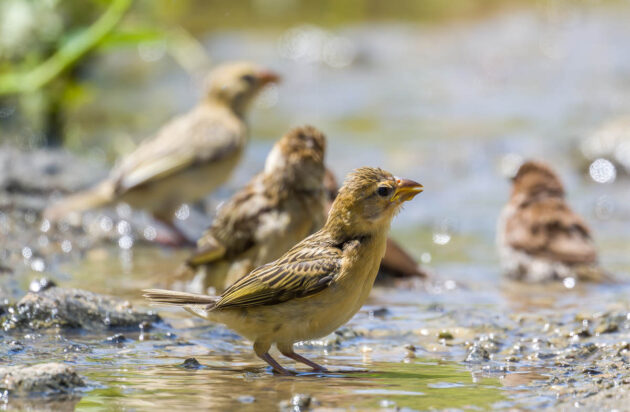
“I want to see some progress when I return to the nest after I am dry again”.
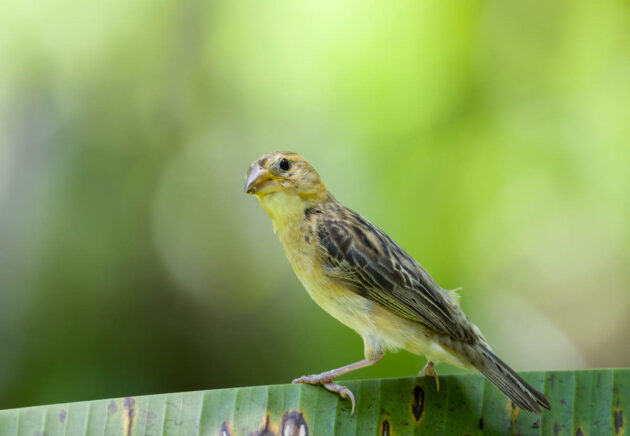
There is a separate post on the hornbills of Sabah – here at Sepilok, two species seem fairly easy to see: the Black Hornbill …
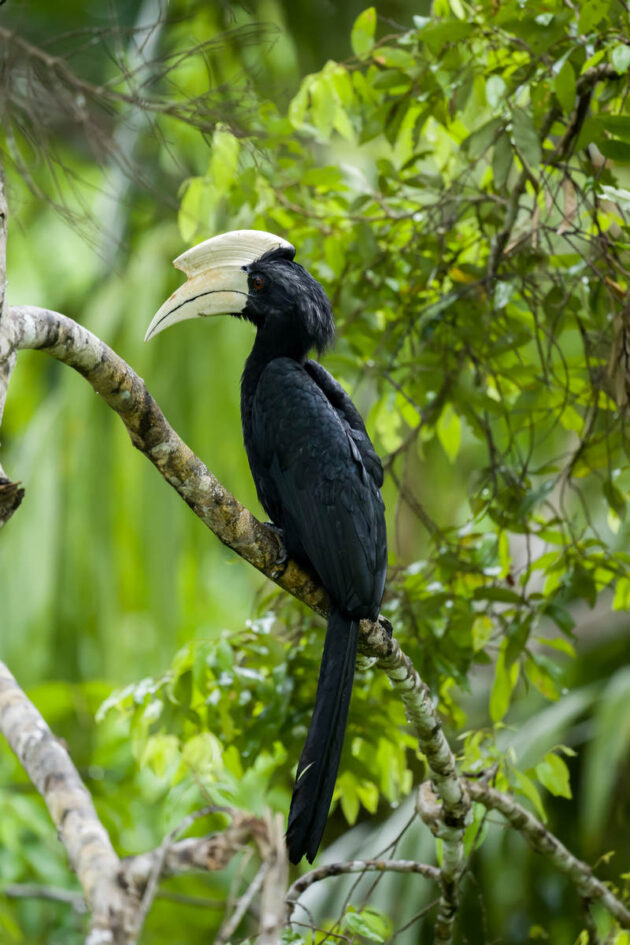
… and the Oriental Pied Hornbill.
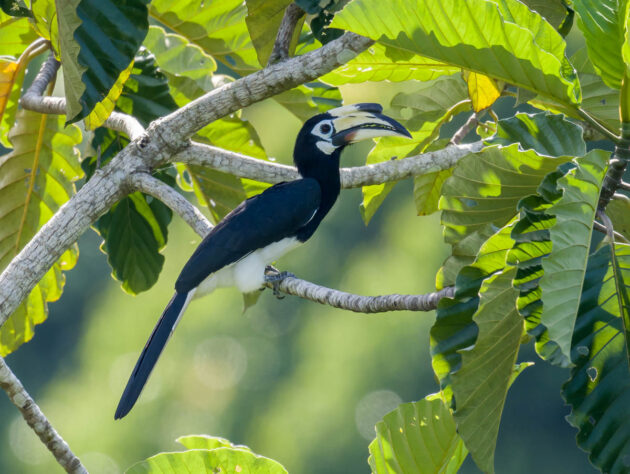
My cats claim that Green Ioras do not taste as well as …
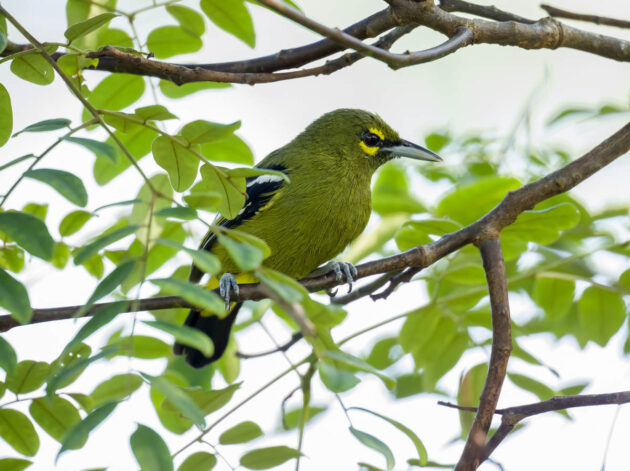
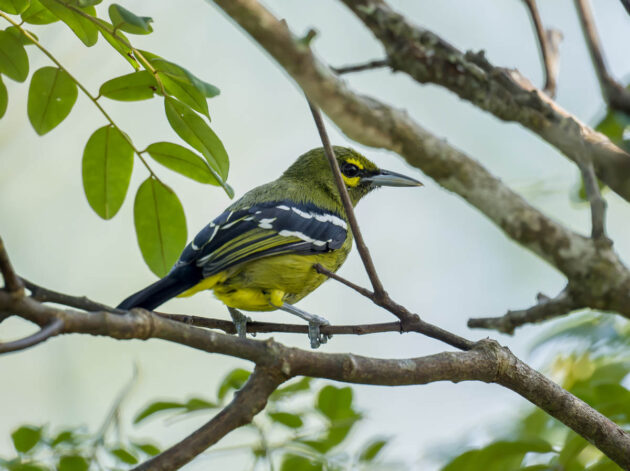
… Common Ioras (more acidic) but I think that may be more of a perception issue – one easily connects the color green with a sour taste, probably based on our experience with fruit (though I sometimes have to remind some of my cats – when they want to steal my bread – that they are obligatory carnivores).
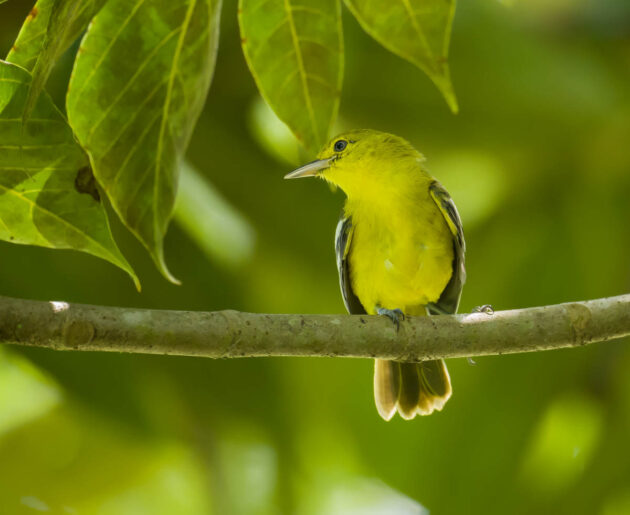
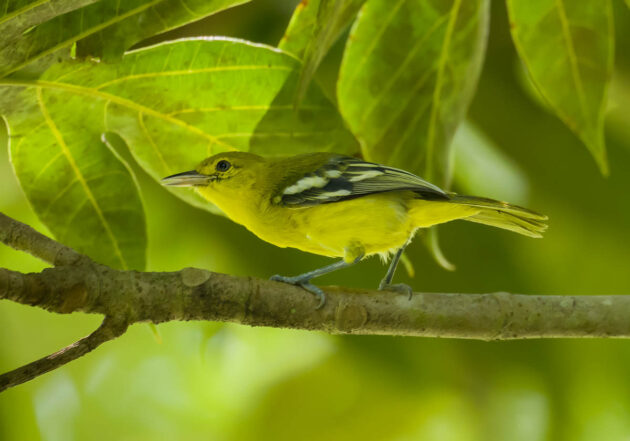
My cats refuse to even try Fiery Minivets. I agree that they look toxic, particularly the females.
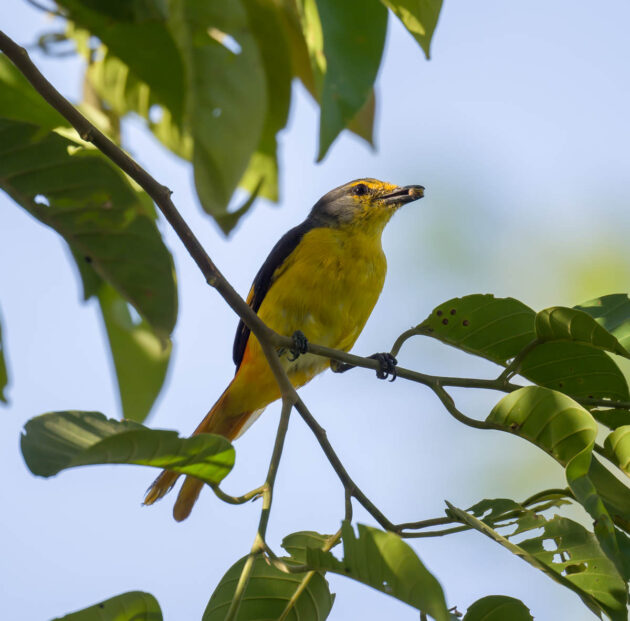
Among the about 15 species of minivets, I think it is the one with the most exciting name. Even the scientific species name is igneus, identical to the English name.
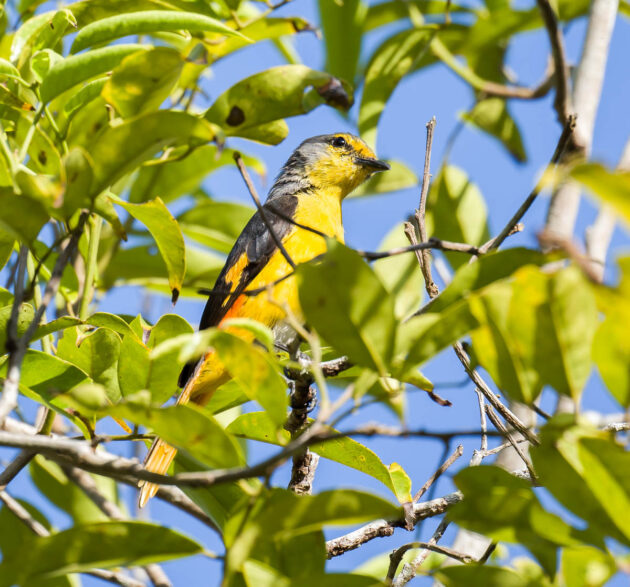
It is classified as Near Threatened as the destruction of its forest habitat continues.
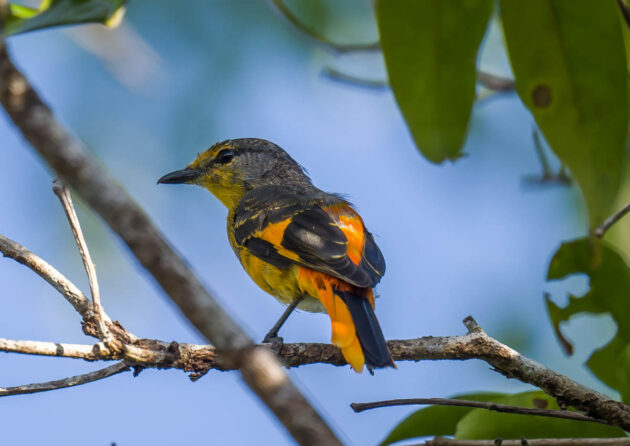
While my cats like the taste of the Greater Racket-tailed Drongo, they tend to look fairly ridiculous eating them, as the racket tail sticks out of their mouth. Makes them look a bit like Olympic flag-bearers. It seems they do not mind though.
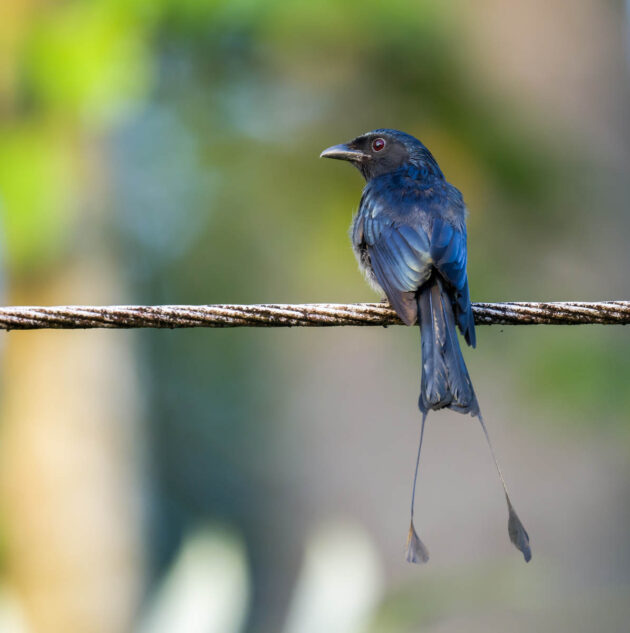
Greater Racket-tailed Drongos frequently participate in mixed-species bird flocks, and a very recent (September 2023) paper examined why that is the case.
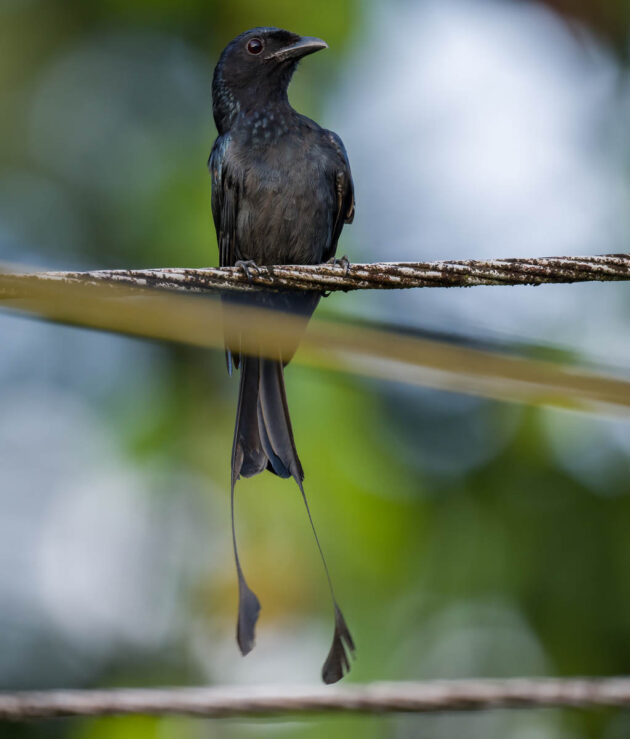
First of all, the paper found that the drongos indeed benefit from joining mixed flocks. The two hypotheses were that the drongos either participate to steal food from other species or that they benefit from insects disturbed by the other birds.
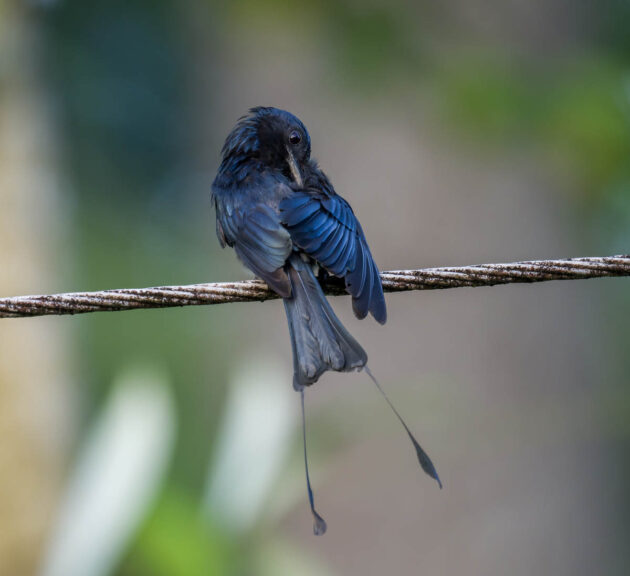
Fortunately for the honor of the species, the researchers found that kleptoparasitism was practiced at a low rate (4% of observations) while much more often, drongos captured insects disturbed by other species (41% of observations).
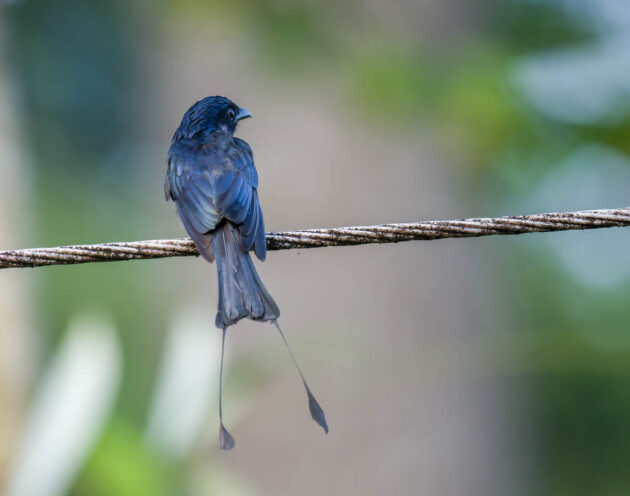
Another blog has some very interesting remarks about the species, which I will just recite directly as they are well-phrased:
“The Greater Racket-Tailed Drongo, a conspicuous black bird with a deeply forked tail, often forages in flocks comprised of up to a dozen different species of birds. The drongo perches above the flock, snatching insects that they disturb, and keeping an eye out for predators that might go unnoticed by its hunting flock-mates. The associated bird species seek out drongos, apparently relying upon them heavily for protection. Drongos feed more effectively when in such flocks, so the benefits go both ways.
Recent studies in Sri Lanka have revealed that, upon sighting a predator, a drongo will imitate the alarm calls of at least 4 other bird species (babblers, laughing thrushes, bulbuls, and others), as well as the call given by the specific predator, i.e. a giant squirrel or eagle.
When unthreatened but hungry, the drongo will attract other birds to itself by imitating their calls – but this time it utilizes contact calls or mating calls. It very effectively forms a small foraging group in this manner. So, the drongo is not only choosing the calls of other species, but it’s using them in the correct context – hawk as opposed to snake, feeding as opposed to mobbing. In essence, the bird is a true linguist.”
I could not have said it better myself, I am afraid.
The male Orange-bellied Flowerpecker has a triangular orange patch on its back, giving it its (slightly Christ-like sounding) scientific species name of trigonostigma (trigonos means triangular, stigmatos means mark).
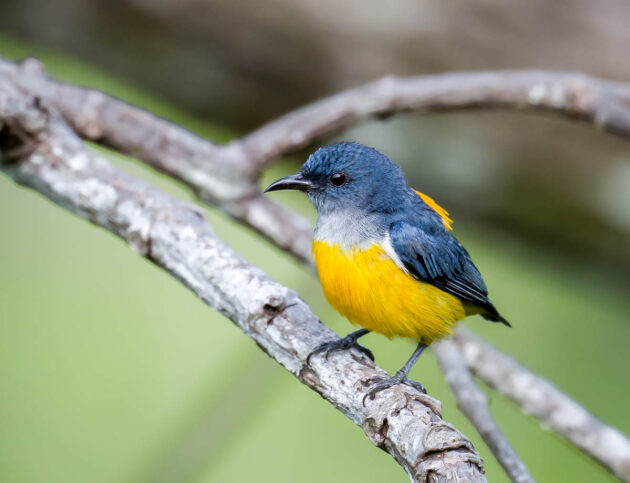
The HBW entry has 18 subspecies – surely there is a nice paper in examining the mitochondrial genome of all of them? Maybe that will result in some massive consolidation …
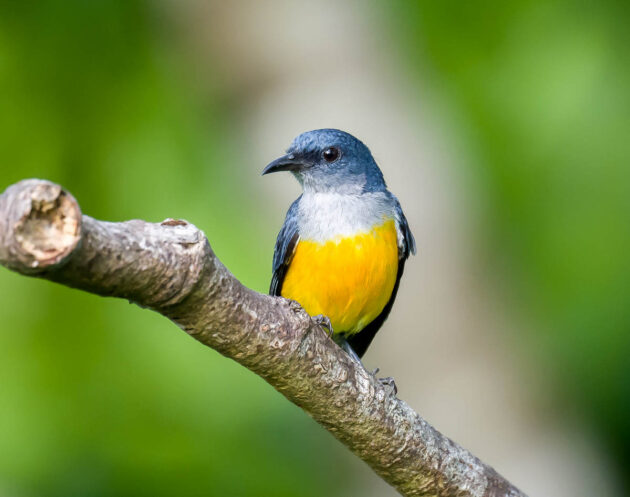
This general color scheme seems to be fashionable with flowerpeckers – the male Yellow-rumped Flowerpecker does not really look all that different, though it does not pretend to be Christ.
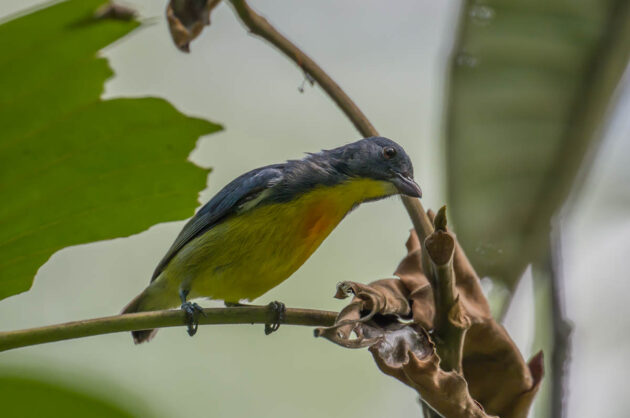
Instead, it has a cute little red patch on its head – and eBird calls it a “brightly-colored pinball of a bird”.
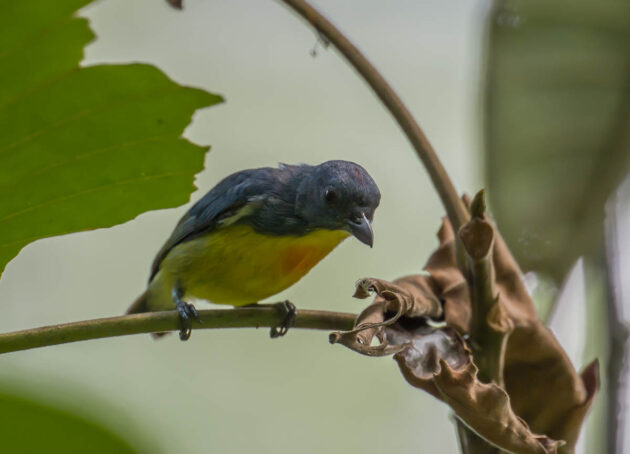
Hopefully, the photos below illustrate why the Oriental Darter is also called the snakebird.
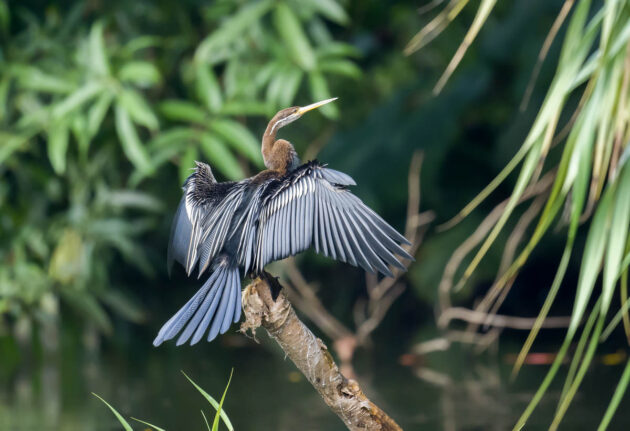
The species is classified as Near Threatened for all the usual depressing reasons – pollution, drainage, hunting, and the collection of eggs and nestlings (source).
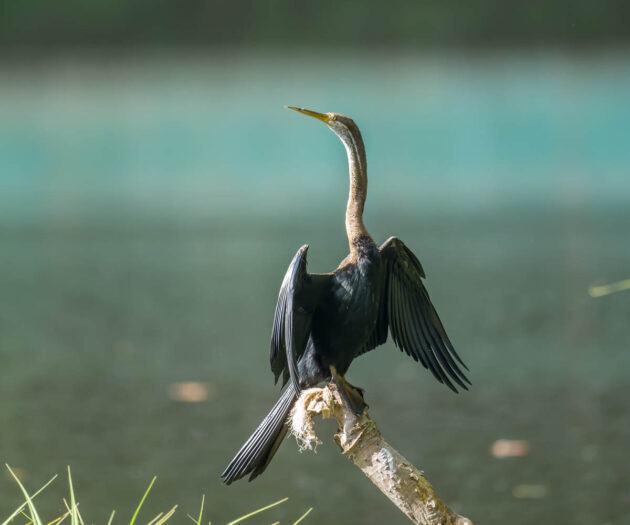
The Indian Express – a newspaper with the somewhat offputting claim “Journalism of Courage” has an article titled “Oriental Darter: Once easy to sight but is rarely spotted now”.
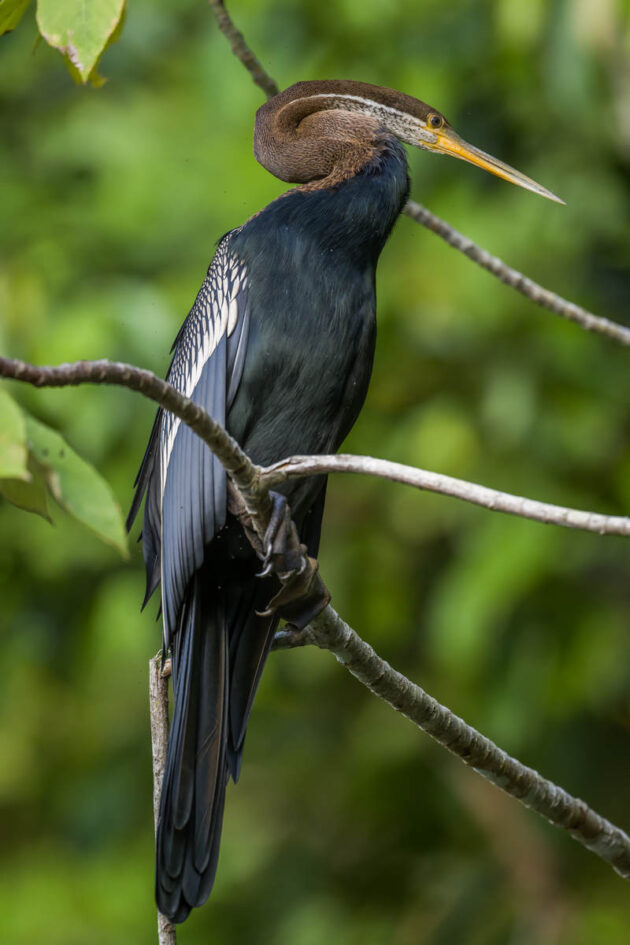
In contrast to humans, the Oriental Darter does not seem to observe specific mealtimes – it was found to have a more or less steady feeding rate throughout the day, though there is a slight decline around noon (when humans tend to stuff themselves).
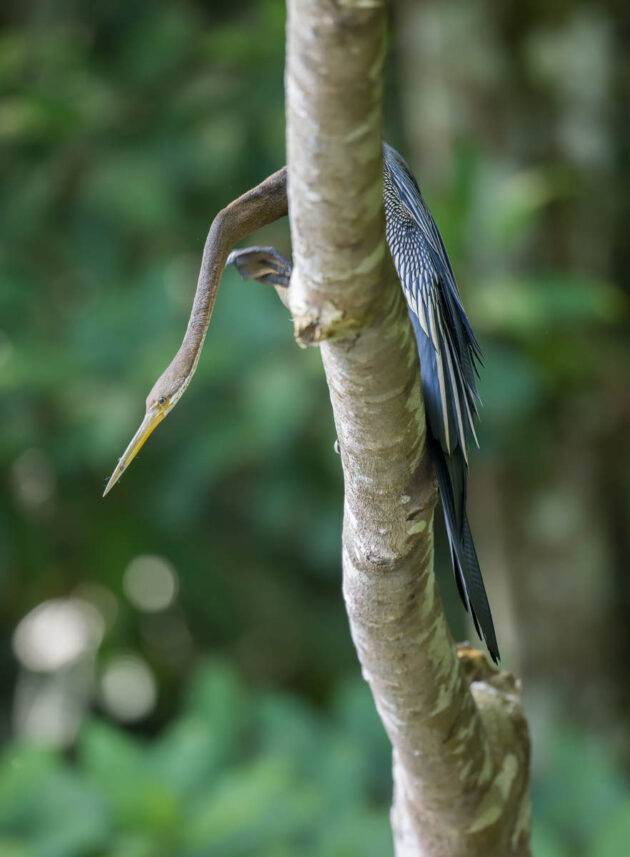
They are also quite catholic (sorry, I really like this word) in their prey selection, feeding on 17 different species of fish and prawn in the study cited above.
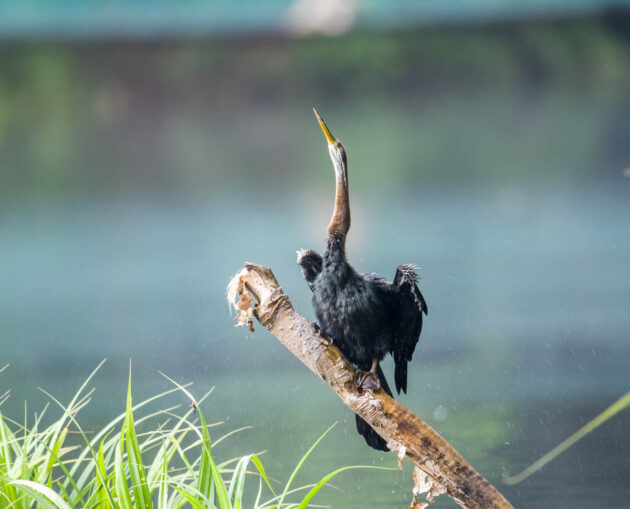
And there is a video here.
As there are many interesting species at Sepilok, I can afford more or less skipping a few of them despite writing three posts on the location. These species include the Pacific Swallow …
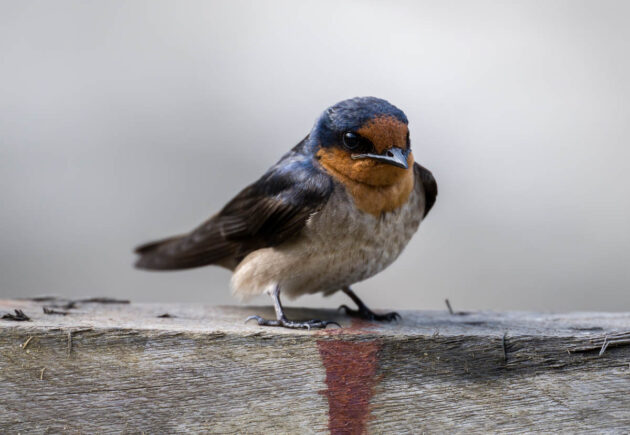
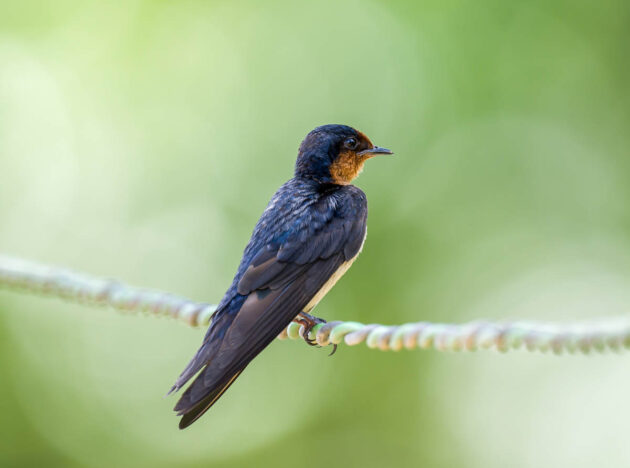
… as well as several pigeons: the Green Imperial Pigeon …
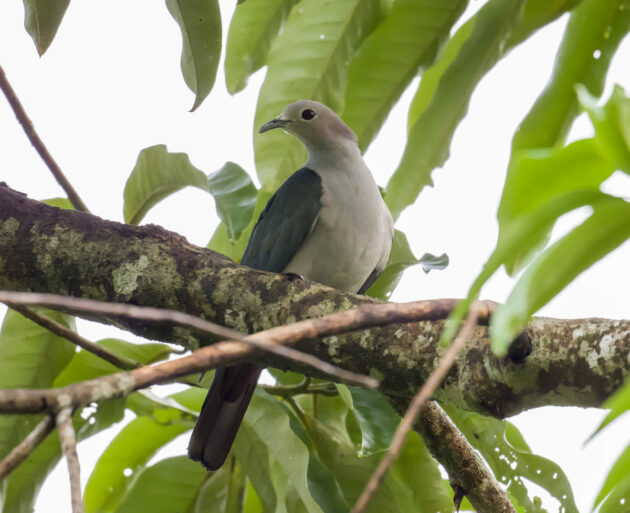
… the Pink-necked Green Pigeon …
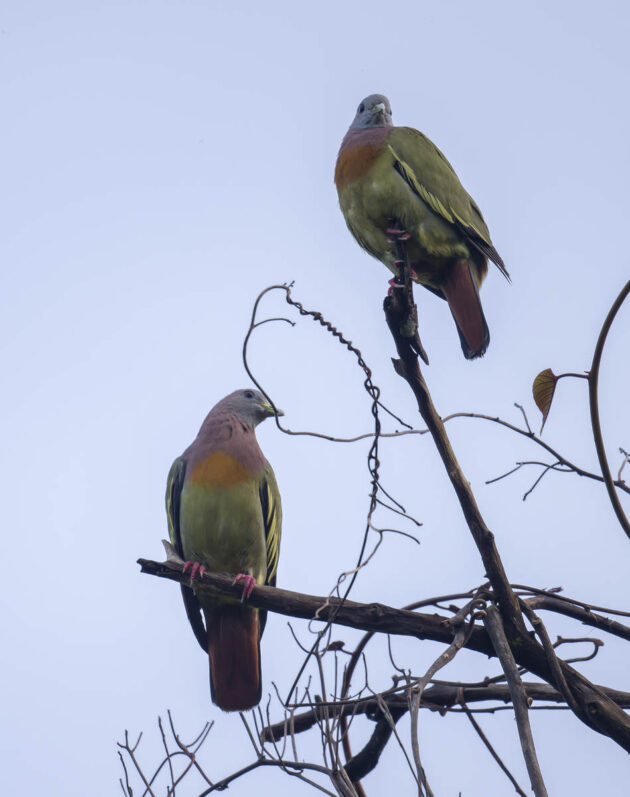
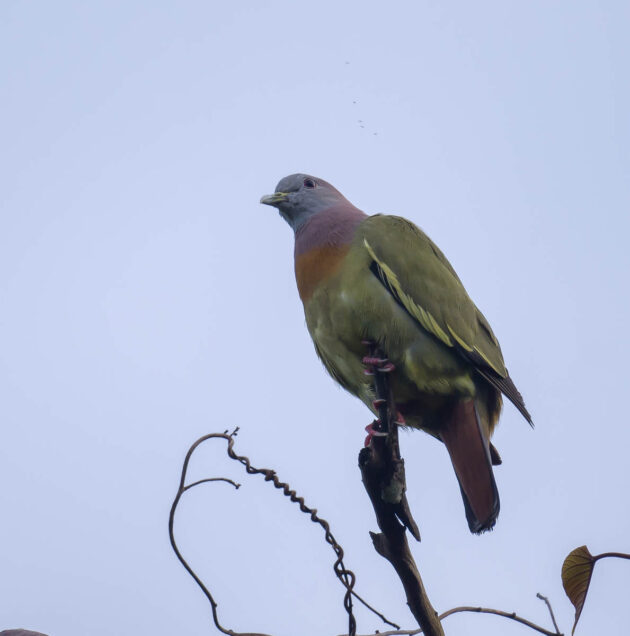
… and the Zebra Dove (even though that one looks remarkably cute for a pigeon).
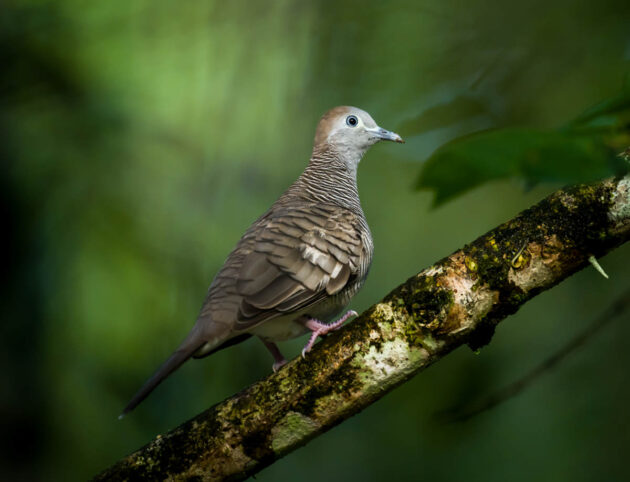
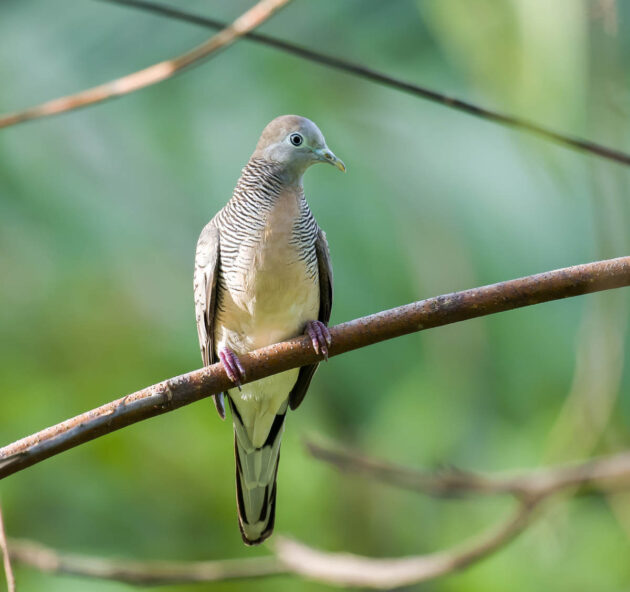
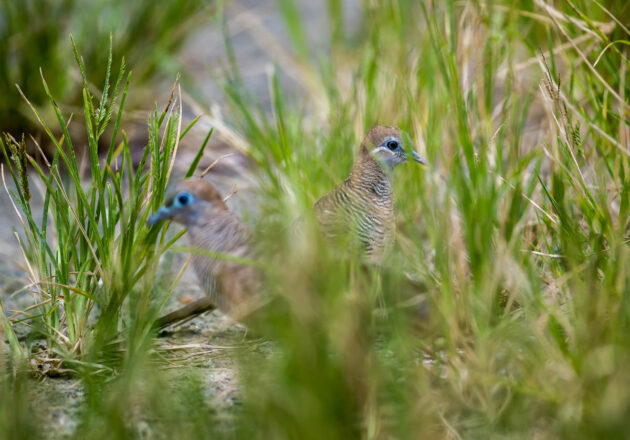
After the two broadbill species at the start of this post, the other main attraction is a pair of two trogons. One is Diard’s Trogon.
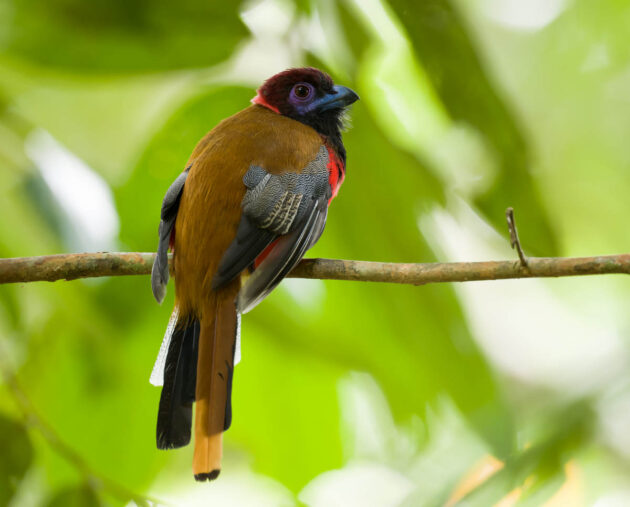
It is classified as Near Threatened.
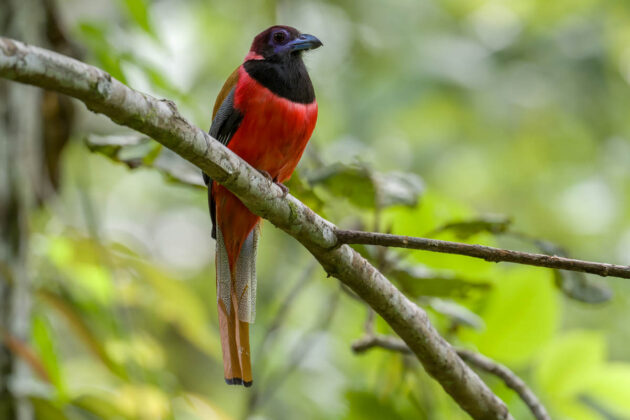
The Wikipedia entry for Pierre Médard Diard ( 1794 – 1863), a French naturalist and explorer, sounds like he was cheated by Sir Raffles. He and a colleague had an agreement with Raffles to accompany him and share the collected species equally, but later “Raffles requisitioned most of their collection and left them copies”.
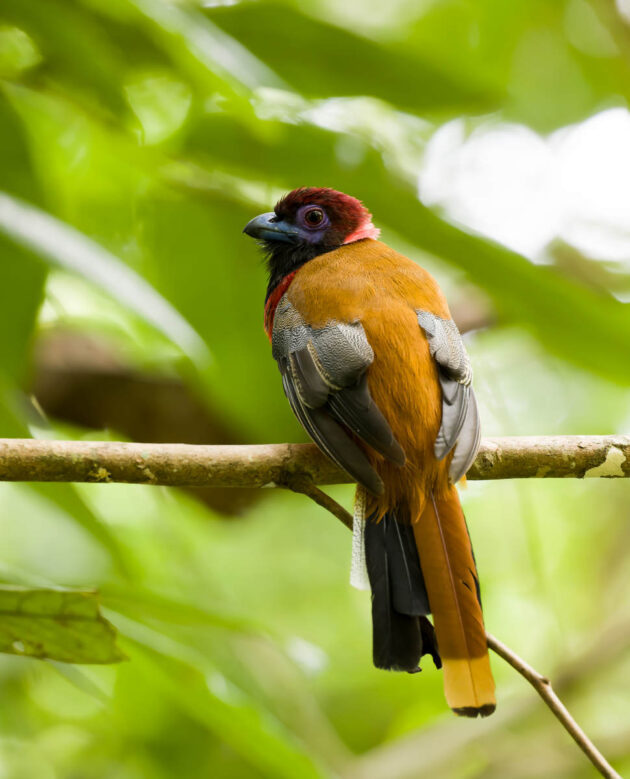
Unsurprisingly (though not very related to trogons), there is a webpage titled “Sir Stamford Raffles Was a Monster”. Which includes sentences such as “Although Raffles is celebrated for ‘founding’ modern Singapore, historical records show that he was also an asshole, a hypocrite, a pathological liar, a pimp, and a moron …”.

You can tell from my elaborating on this that there is not too much information on this trogon. Anyway, below is the female, and here are two videos.
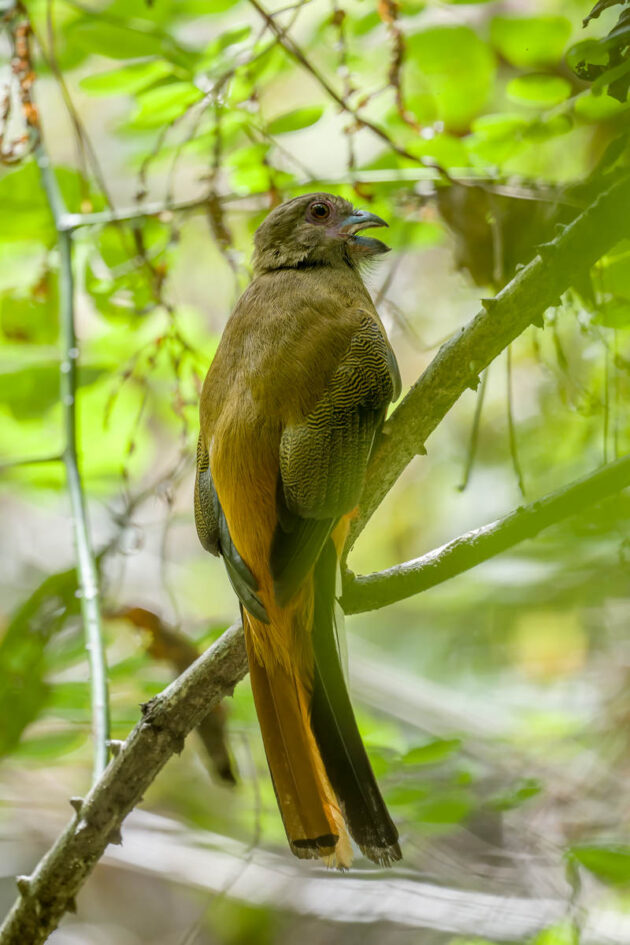
Unfortunately, photos of the female are the only ones I got for the Red-naped Trogon. Trust me, the species name makes sense for the male, though not for the female.
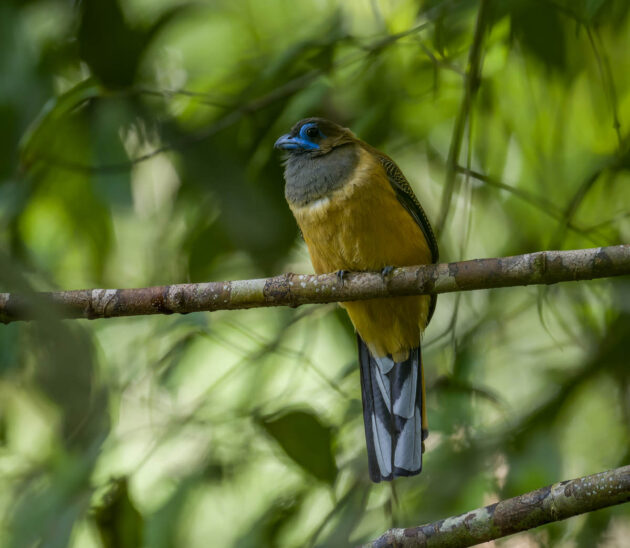
It is also classified as Near Threatened. And while the scientific species name kasumba sounds like some frightening new fitness trend or a dancing game performed on cruise ships, it is apparently just the Malay term for red.
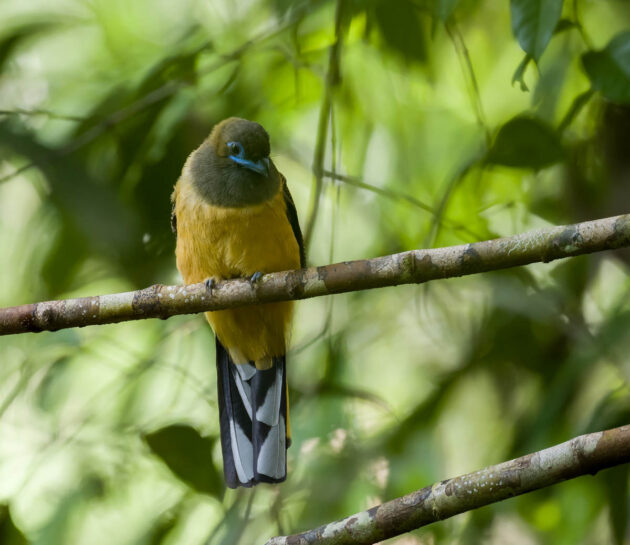
After these trogons, the eBird description of the Yellow-bellied Prinia as “brightly-colored for a prinia” sounds a bit like the dialogue from Succession:
“Tom: ‘The poorest rich person in America. The world’s tallest dwarf.’
Connor: ‘The weakest strong man at the circus.'”
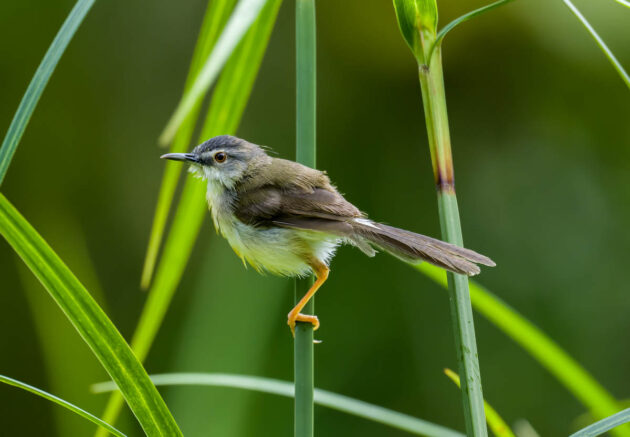
The White-crowned Shama is (more or less) a Sabah endemic. It looks a bit like it has been created by taking the individual modules of the White-rumped Shama and just using them in different locations of the avian body. Also available as a video and another video.
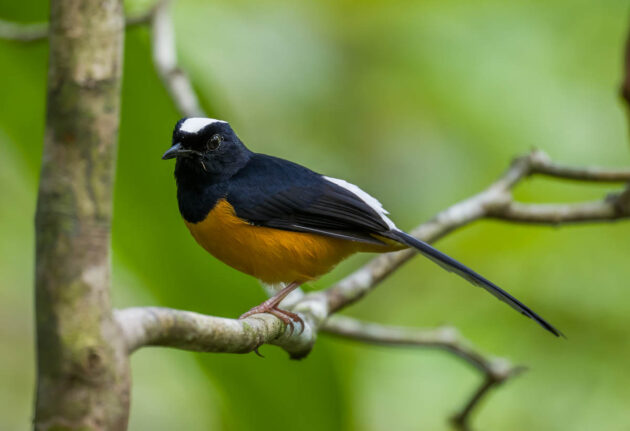
The scientific species name stricklandii commemorates Hugh Edwin Strickland (1811-1853), a British geologist, zoologist, and the coordinator of the Strickland Code, a code of nomenclature for taxonomic classification prepared by a committee of the British Association for the Advancement of Science, first published in 1842 (source).
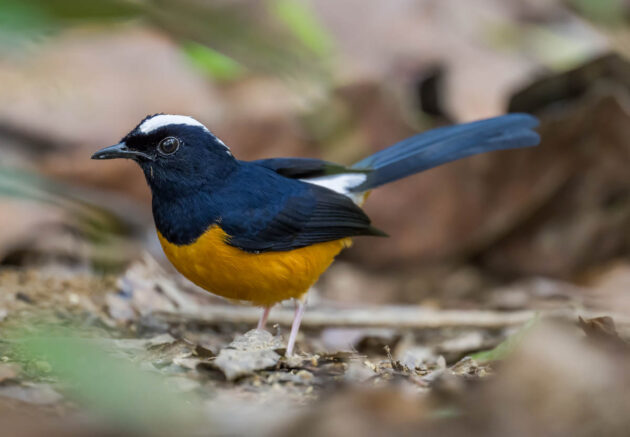
There is a lengthy description of how these rules – after much deliberation – came to be accepted. I am sure one could make a very boring movie based on the events described in this paper.
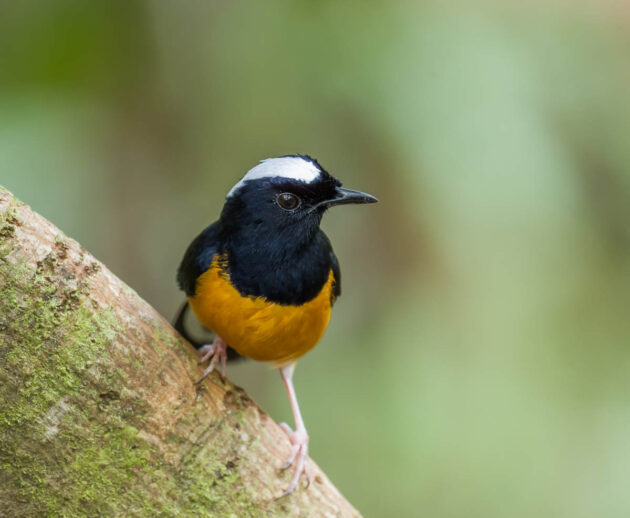
If you want to look up Strickland on Wikipedia, make sure not to just type in “Strickland”, as this will only lead you to the entry for the (in my opinion rather ugly) mixed martial artist Sean Strickland.
Unlike Sean the martial artist, who is still alive, our Strickland is already dead – when he went to examine the geological strata visible on a railway near Retford in the UK, he stepped out of the way of a goods train on a double track and was hit and killed by an express coming in the opposite direction. The dangers of being a geologist.
If you want to know how not to build attractive nests, you may want to look up a paper on the nest of a Yellow-eared Spiderhunter.
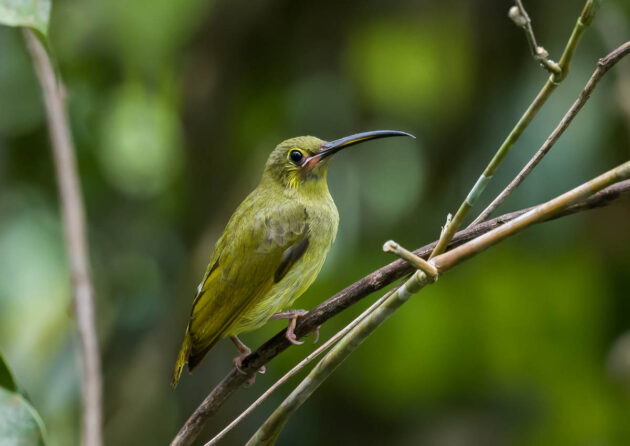
This bird is also responsible for perpetuating evil by pollinating and taking nectar from durian trees.
In the unloved “Other” section of today’s post, we have a few more mammals. As you may know, I am not particularly fond of mammals, even though most of them do not have to pay hefty bribes to pornstars to avoid having some of their dirty secrets revealed.
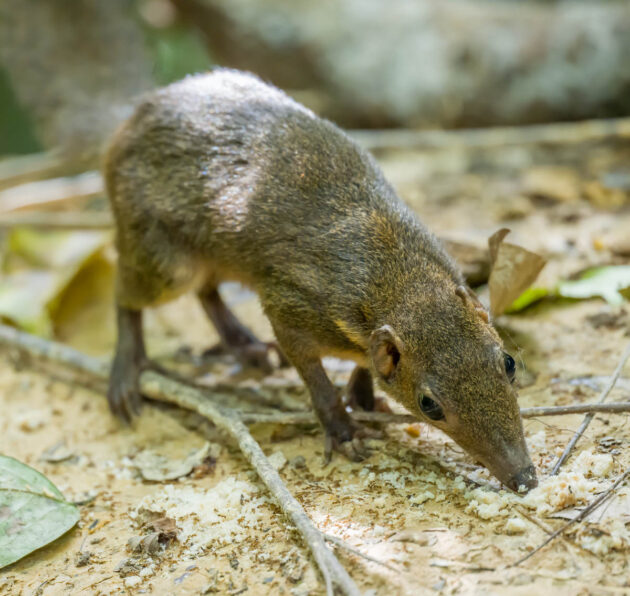
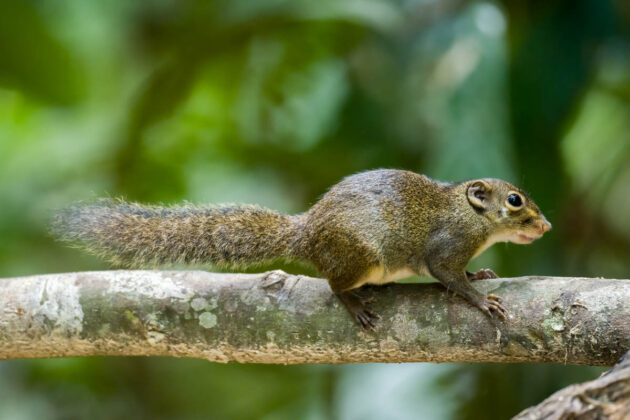
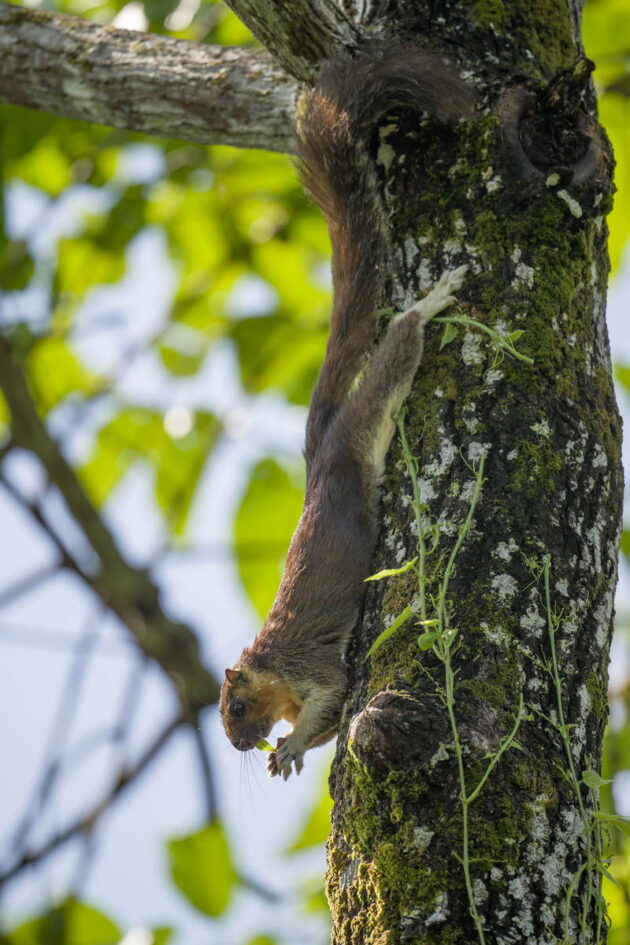



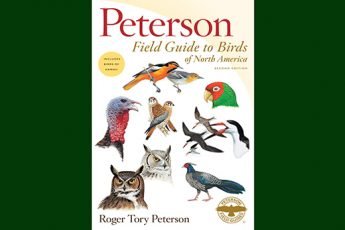
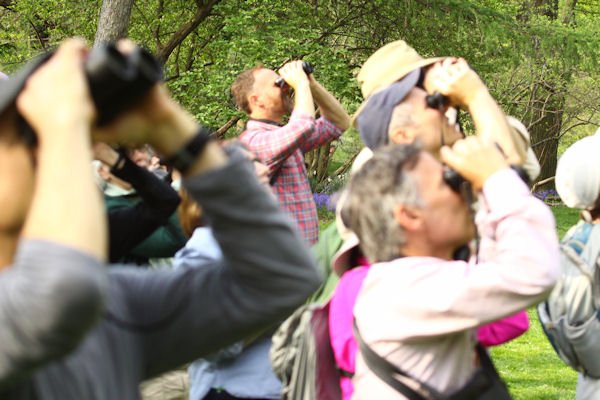

 New writers welcome – please contact us for details.
New writers welcome – please contact us for details.














Amazing pictures! During my days of regular business trips to South Kalimantan, I mostly went there in November, when the skies are overcast and the air is thick with the smoke of recently cleared and burned forests. Most of my images of forest birds therefore are dark and grainy due to excessively high ISO settings. Nevertheless, the birds were just magical, especially the broadbills. This group has such beautiful species, it boggles the mind. Thank you for bringing back those sweet memories.
Just under two years ago, I also got an amazing photo of a Black-and-Yellow Broadbill from the canopy walkway at Sepilok, with a bird that was amazingly cooperative at very close range (a general requirement for me, since my optics are certainly a few notches below what you probably use.) I wonder if it was the same bird? 😉 The Black-and-Red, however, only graced us with one appearance, in the very dim early morning light.